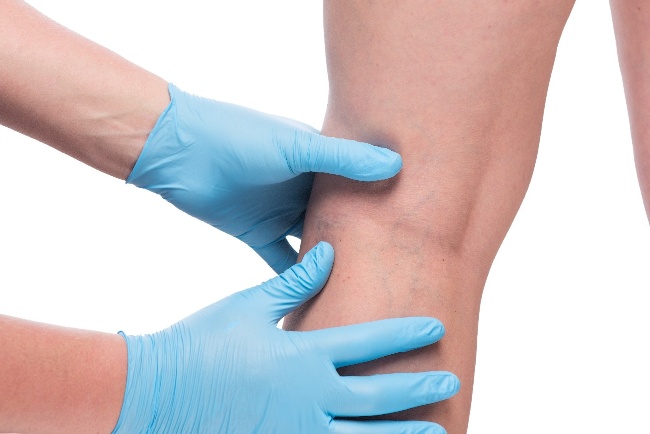Top Warning Signs of Deep Vein Thrombosis

How much do you know about deep vein thrombosis? Thrombosis means a blood clot, and deep vein thrombosis (DVT) indicates a blood clot in a vein deep beneath the surface. It’s extremely serious, and somewhere between 10 and 30 percent of people with DVT will die within a month of their diagnosis. Why is this? Because people don’t necessarily know the warning signs, they don’t seek medical treatment. Diagnosed early, it can be successfully treated. That’s why it’s important to know the warning signs of deep vein thrombosis.
Deep vein thrombosis can affect the arms or pelvis, but it typically occurs in the lower leg. Sometimes, a piece of the blood clot breaks loose. The piece of blood clot can travel through the bloodstream to the lungs, where it blocks the blood flow in one of the pulmonary arteries. This condition is a pulmonary embolism, which can be life-threatening.
Why do people develop DVT? Immobility is one of the primary risk factors. If you’ve had surgery, sustained an injury, or been ill, and spend an extended time in bed, your risk of DVT increases significantly. However, the immobility caused by a long car ride or flight, or even just sitting still too long in front of the television or computer, can also raise your risk of DVT.
An imbalance of the biochemicals that control clotting can make your blood more likely to clot. And in addition to immobility, the risk of DVT is raised by pregnancy, smoking, stroke, heart disease, obesity, high blood pressure, and inherited blood-clotting disorder. At first, you may not have any symptoms of DVT. However, it’s important to be aware of the warning signs, which include:
- Swelling: This is the top warning sign, affecting about 70 percent of DVT patients. If the clot is in your thigh or calf, only one leg will swell. However, if it’s in your pelvis, you may experience swelling in both legs.
- Leg pain: This symptom occurs in 50 percent of patients and is felt like a cramp or tender spot, usually in the calf muscles or inner thigh.
- Skin changes: Your skin may look red or discolored and your swollen or painful leg may feel warm.
- Pain with a flexed foot: If your foot hurts when you flex it, pointing the toes up toward your knee, you may have DVT.
For 25 percent of those with DVT, the first symptom is sudden death from a pulmonary embolism. The first signs of this condition include sudden shortness of breath or chest pain that worsens when you take a breath, lightheadedness or dizziness, rapid pulse, or coughing up blood. If you believe you’re having a pulmonary embolism, call 911 for emergency help. If you’re seeking the very best care for your vein and blood flow issues, trust the board-certified physicians at the Arizona Vein & Laser Institute. Using the most advanced technology, the vascular and cardiovascular surgeons at the Arizona Vein & Laser Institute provide care for all types of venous diseases. With over 40 years of experience, our team of experienced physicians can devise the right treatment plan to address your venous disease problems. For more information contact us through our website.
